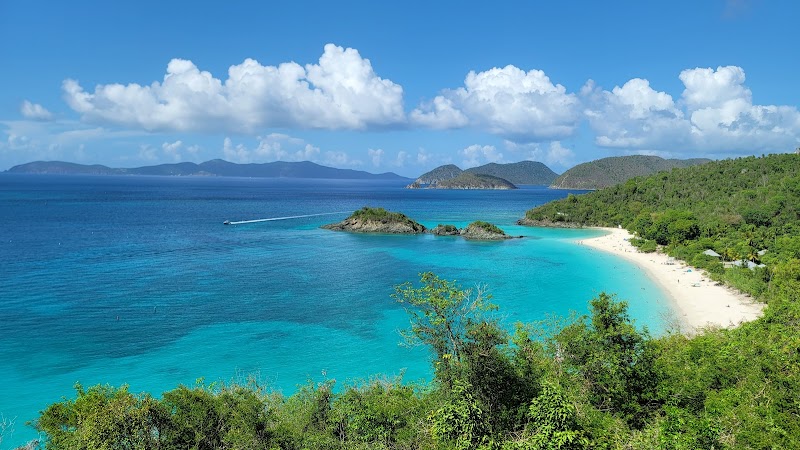Mastering Puerto Rico’s Marine Terrain: Eco-Conscious Exploration Tips
Puerto Rico’s marine environment offers thrilling underwater vistas and coastal adventures that captivate all levels of explorers. This guide provides practical, eco-conscious tips to navigate its vibrant waters safely while protecting fragile ecosystems.
Use Reef-Safe Sunscreen
Choose sunscreens labeled reef-safe to avoid chemicals like oxybenzone and octinoxate, which damage coral and marine life.
Maintain Respectful Distance
Keep at least 6 feet from sea turtles and marine animals to avoid stress and harmful interference with their natural behavior.
Wear Protective Footwear
Reef shoes or sturdy water sandals protect your feet on jagged rocks and coral, preventing injury and accidental reef damage.
Dispose of Waste Properly
Carry reusable containers and take trash back with you, preventing marine pollution that endangers wildlife and habitats.
Mastering Puerto Rico’s Marine Terrain: Eco-Conscious Exploration Tips

El Conquistador Resort Sunset Sail by SAL Tours
The BEST way to experience our Caribbean sunset • 2 hour cruise
Discover the beauty of Puerto Rico’s coastline on a private sunset sail from Fajardo. With stunning views and marine wildlife sightings, this boat tour promises a relaxing and memorable experience in the Caribbean.
Puerto Rico's coastal waters pulse with a life fiercely at ease in its vibrant reefs and shifting tides. From the crystalline coves of Vieques to the mangrove thickets at La Parguera, the island’s marine environment invites exploration with both awe and respect.
Navigating this aquatic world demands more than just a paddle or snorkel—it asks for a mindful partnership. The currents dare you to move fluidly; the coral guards its fragile colonies against careless hands. Eco-conscious travelers can engage fully while minimizing their footprint, ensuring these waters remain teeming for generations.
Start your adventure by choosing sites recognized for sustainable tourism—Coral Reefs Preserve Areas and marine reserves. These spots have guidelines in place to protect delicate ecosystems. When snorkeling or diving, avoid standing on or touching coral structures. These organisms, though slow and unassuming, are living architects building reefs over centuries.
Timing your visits is critical. Mornings bring calmer seas and less visitor traffic, giving you a clearing look at underwater gardens where parrotfish and sea turtles patrol like sentinels. Keep your distance from marine wildlife, allowing them to maintain their natural rhythms.
Preparation includes wearing reef-safe sunscreen to prevent chemical damage. Opt for biodegradable products that the ocean can absorb without harm. Use durable, reef-friendly footwear if you plan to explore rocky shorelines where unforgiving waves test your footing.
Plan your gear around practicality: a sturdy mask with clear lenses, fins that fit snugly without restricting movement, and a waterproof bag to safeguard essentials. Hydrate well—salt air and sun can strip moisture faster than you expect.
Respect the marine environment by disposing of trash properly and refraining from collecting shells or marine organisms. If kayaking or paddleboarding, navigate channels thoughtfully, steering clear of shallow coral patches where you might unknowingly cause damage.
Each adventure undertakes a learning curve; listen to local guides who read the sea’s moods closely. Their insights into currents and marine behaviors enrich your experience while keeping safety front and center.
Ultimately, Puerto Rico’s waters are a place where nature asserts itself, vibrant and demanding care. By moving consciously through its marine world, you engage in a dialogue—balancing excitement with responsibility. This relationship preserves the ocean’s fierce, timeless pulse for the adventurer in all of us.
Nearby Trips
All Adventures
Boat Charters
Water Activities
Adventures near Fajardo
Discover the unique and memorable adventures that make Fajardo special.
Frequently Asked Questions
What marine areas in Puerto Rico are best for eco-conscious visits?
Marine reserves like La Parguera and the Vieques National Wildlife Refuge have strict conservation regulations, making them ideal for responsible snorkeling and kayaking.
Can I touch the coral or wildlife while snorkeling?
No. Coral is fragile and touching can cause long-term damage. Similarly, avoid contact with wildlife to prevent stressing animals or risking injury.
Are there any risks from marine wildlife I should be aware of?
While most marine fauna are non-aggressive, watch for jellyfish blooms and be cautious around sea urchins and fire corals, which can cause painful stings.
What local wildlife might I encounter during a marine eco-adventure?
Expect to see sea turtles, parrotfish, nurse sharks, and a variety of colorful reef fish, along with migratory birds in mangrove areas.
How can I minimize my environmental impact while exploring marine areas?
Stick to marked trails and diving/snorkeling zones, avoid feeding wildlife, use reef-safe products, and always pack out your trash.
Are guided eco-tours available to help understand marine conservation better?
Yes, many local operators offer educational eco-tours led by marine biologists or naturalists who emphasize sustainable practices and local ecology.
Recommended Gear
Reef-Safe Sunscreen
Protects skin while preserving marine ecosystems by avoiding harmful UV-filter chemicals.
Snorkeling Mask and Fins
Essential for clear underwater vision and efficient movement through currents.
Reef Shoes
Protect your feet from sharp coral and jagged rocks and reduce impact on reef structures.
Waterproof Dry Bag
Keeps valuables and extra clothes dry while on the water or shore.
Local Insights
Hidden Gems
- "Cayo Icacos offers less crowded snorkeling with expansive coral gardens."
- "The mangrove channels at La Parguera hide vibrant bioluminescent waters at night."
Wildlife
- "Keep an eye out for the glowing flashes of the electric eel near reef crevices."
- "Hawksbill turtles, critical for coral health, frequent sheltered bays."
History
"Puerto Rico’s marine heritage weaves centuries of indigenous fishing practices and Spanish colonial trade routes, reflected in coastal artifacts and traditional boat designs still used today."
